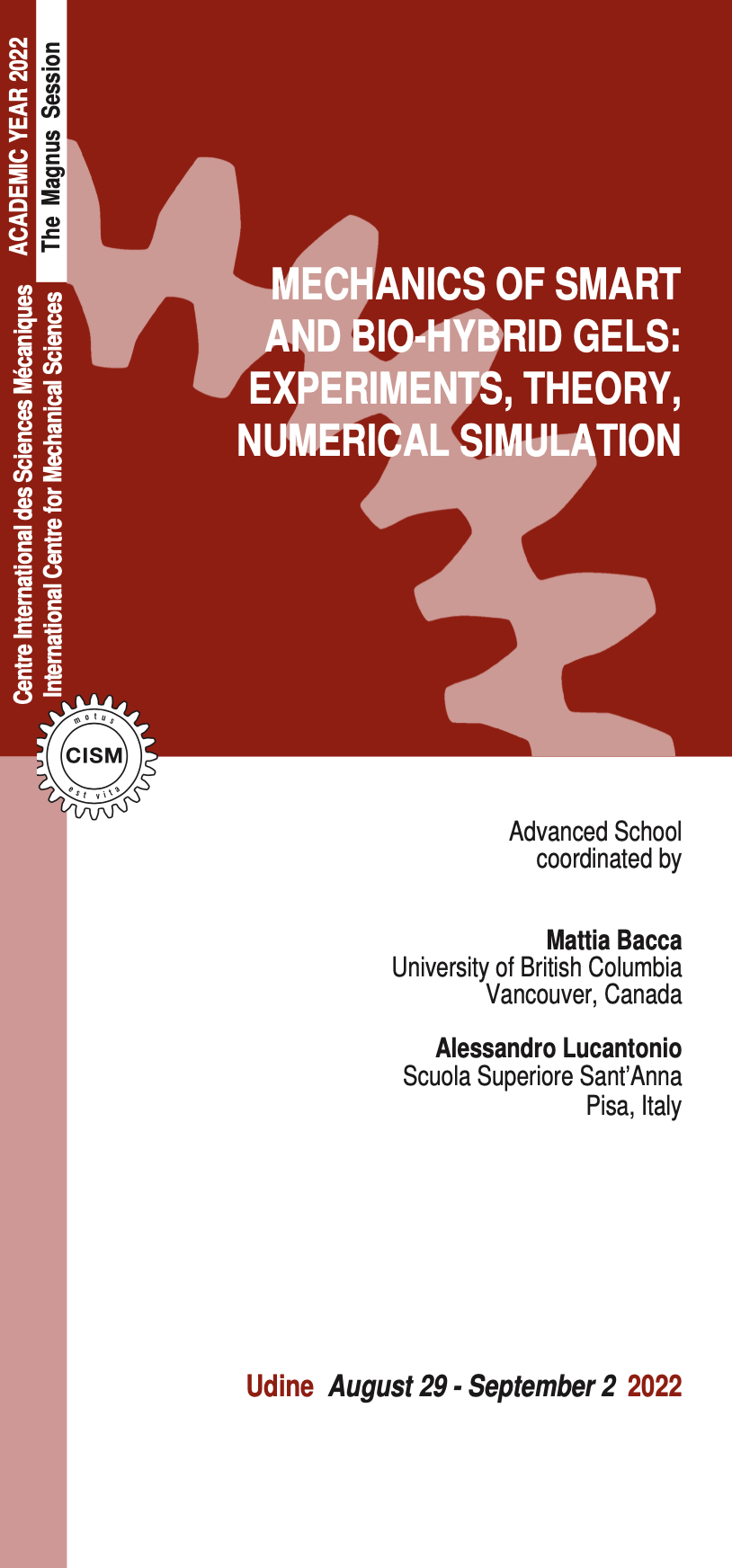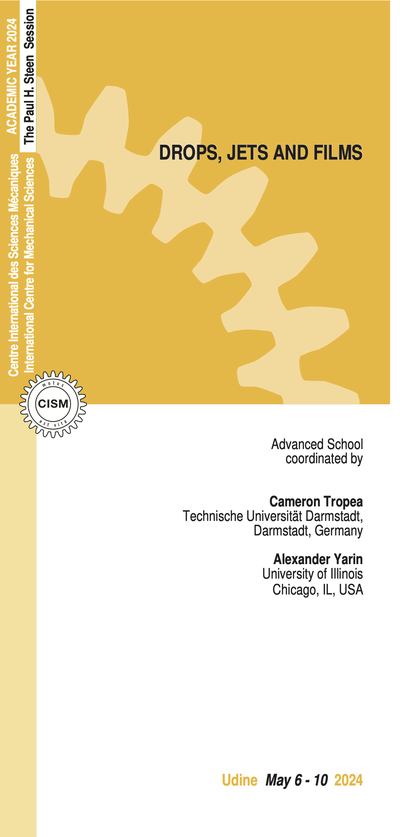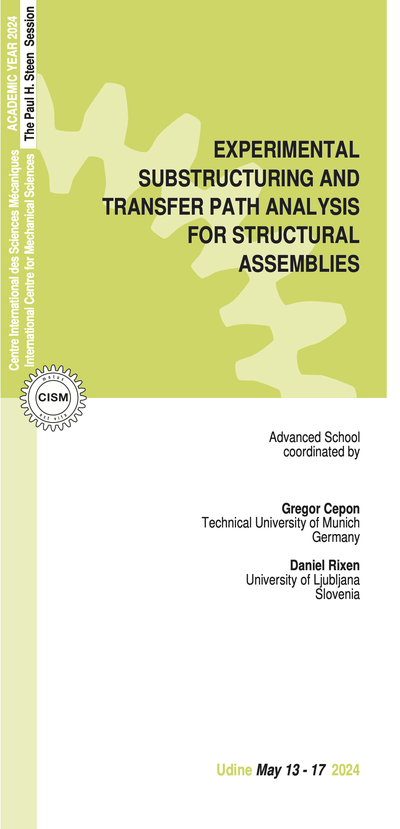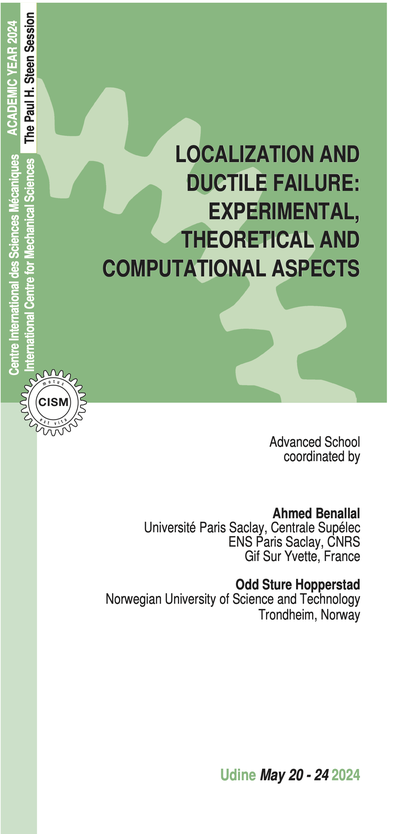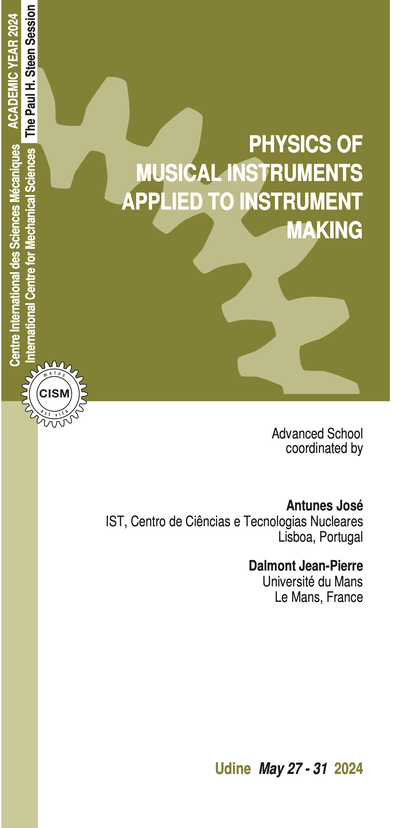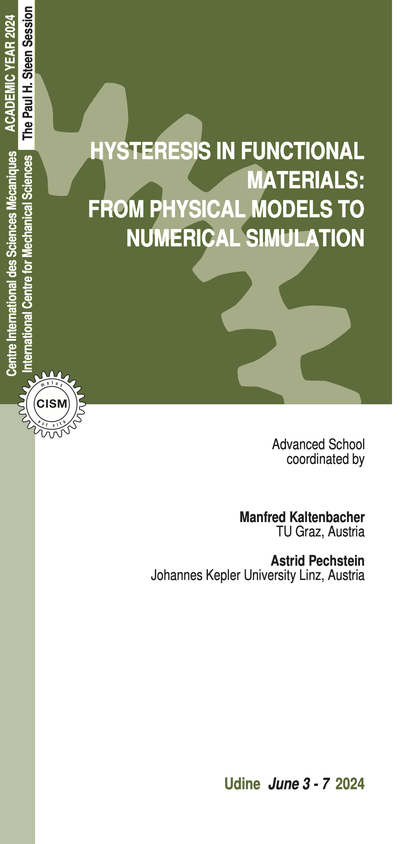The proposed course aims at creating a bridge between mechanics, chemistry, physics and biology to educate new scientists in the new and fast growing scientific framework of active soft matter. Many health treatments involving drug delivery and tissue transplant technology rely on a deep understanding of the physiological conditions of the living tissue involved. To achieve this, one needs to account for the coupling between the mechanical behavior of the tissue and its biochemical activity at multiple length scales, from intracellular mechanisms to tissue behavior at the organ level. In this framework, most of the scientific problems require cross-disciplinary expertise to be tackled, hence the emerging need for a new generation of scientists capable of combining fundamental concepts from different disciplines.
The course is aimed at researchers and graduate students in the fields of applied mathematics, mechanical and chemical engineering, physics, biology and biophysics.
Dr. Zhigang Suo will introduce the concept of hydrogel. Polymeric gels constitute a reliable physical model platform for most of the soft biological tissue constituting the human body hence this represents the foundation of this course. He will provide basic insight on the main mechanical properties of these materials such as adhesive strength, fracture toughness, fatigue resistance and viscoelasticity.
Dr. Alessandro Lucantonio will discuss the analytical and computational tools available today to describe the mechanical behavior of gels with particular focus on their poroelastic behavior, which couples elasticity of the polymer network and species diffusion.
Dr. Mattia Bacca will discuss the thermodynamics of active deformation for materials depicted as a microstructural evolution. The phenomenon emerges from biochemical process, the activity of molecular motors powered by ATP hydrolysis, which alter the equilibrium state of the material, resulting in (active) macroscopic deformation.
Dr. Robert McMeeking will discuss the mechanics and thermodynamics of actin polymerization occurring within the cytoskeleton and the mechanics of cell adhesion. This will highlight the active and anisotropic characteristics of the material constituting living cells.
Dr. Antonio De Simone will provide an introduction of undamental concepts on crawling and deformation driven locomotion of living systems. This will link the motility of a cell with its biochemical activity at the molecular level (actin- myosin, microtubule-dynein).
Dr. Nancy Forde lectures will provide insight into experimental techniques for characterization soft matter and measure molecular-scale phenomena. She will then provide theoretical and practical insight on micro rheology, single- molecule mechanics and other techniques to create synthetic molecular motors.
Finally, Dr. Anne Bernheim will provide insight into the theory and the experimental techniques utilized to recreate other cell-level mechanisms with in-vitro system and will conclude the course.
W. Hong, X. Zhao, J. Zhou, Z. Suo (2005) “A theory of coupled diffusion and large deformation in polymeric gels” Journal of the Mechanics and Physics of Solids 56 1779-1793.
A. Lucantonio, P. Nardinocchi, L. Teresi (2013) “Transient analysis of swelling-induced large deformations in polymer gels” Journal of the Mechanics and Physics of Solids 61 205-218.
M. Bacca, O.A. Saleh, R.M. McMeeking (2018) “Contraction of polymer gels created by the activity of molecular motors” Soft Matter 15 4467-4475.
V.S. Deshpande, R.M. McMeeking, A.G. Evans (2006) “A bio-chemo-mechanical model for cell contractility” Proceedings of the National Academy of Sciences - USA 103 14015-14020.
G. Noselli, A. Beran, M. Arroyo, A. DeSimone (2019) “Swimming euglena respond to confinement with a behavioural change enabling effective crawling” Nature Physics 179 799-805.
M.W.H. Kirkness, K. Lehmann, N.R. Forde (2019) “Mechanics and Structural Stability of the Collagen Triple Helix” arXiv:1903.07276.
A. Bernheim-Groswasser, N. Gov, S. Safran, N. Tzlil (2018) “Living matter: mesoscopic active materials” Advanced Materials 30 1707028.
4 lectures on: Continuum mechanics and thermodynamics of active soft materials
1. Non-equilibrium thermodynamics of the continuum; 2. State variables and microstructure evolution of materials; 3. Energy transduction and chemo-mechanics of materials; 4. Contraction of an active gel.
6 lectures on: In-vitro reconstitution of the contractile cytoskeleton
1. In vitro system as a model for reconstituting cellular processes; 2-3. Actin based motility driven by actin polymerization; 4. Active gels - self-organization and patterning; 5. Actomyosin gels - contractility and poroelasticity; 6. Spontaneous 3D shape transitions of contractile actomyosin gel sheets.
2 lectures on: Systems of motors and bio-filaments and their role in cell motility
1. Dyneins and microtubules in eukaryotic cilia and flagella; 2. Shape programming in biological and artificial systems.
6 lectures on: Mechanical properties of biological systems at the nano- and micro-scale
1. (Bio)Polymer mechanics - theory and experiment; 2. Single-molecule mechanics techniques; 3. DNA mechanics; 4. Microrheology - exper- imental approaches; 5. Collagen mechanics - from molecules to the matrix; 6. Synthetic molecular motors.
4 lectures on: Theoretical and computational modeling of polymer gels
1. Introduction to polymer physics and review of coupled models for swelling gels; 2. Asymptotic analysis of transient and steady swelling phenomena; 3. Poroelastic fracture in gels; 4. Finite element formulation of the coupled model and applications.
5 lectures on: Cell contractility and adhesion
1. Acto-myosin stress fibres and cell adhesion; 2. Biochemomechan- ical mechanisms of contractility; 3. Model of contractility/signaling interactions and in vitro behavior; 4. Interaction of cells with compliant substrates; 5. Modeling in vivo behavior.
6 lectures on: Hydrogels
1. Hydrogel ionotronics and bioelectronics; 2. Tough hydrogels; 3. Fatigue of hydrogels; 4. Stretchable materials of high toughness and low hysteresis; 5. Hydrogel adhesion; 6. Poroelasticity of hydrogels.
